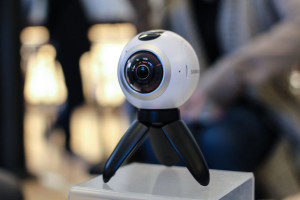 Samsung Gear 360
Samsung Gear 360
In addition to the galaxy S7 and S7 Edge, Samsung introduced the Gear 360, a small, spherical camera that can shoot and record 360-degree views.
The camera is small – a bit smaller than a baseball – and it can record 360-degree Ultra HD (4k) video as well as capture 30MP still photos. According to the company, you can view your 360-degree scenes on supported Galaxy phones, as well as using Samsung’s Gear VR virtual reality headset.
Samsung expects to release the Gear 360 sometime in the second quarter of this year.
HP Elite X3
HP targeted security-conscious business users and IT with the Elite x3, a smartphone that runs Windows 10 Mobile with aspirations to be your next desktop PC.
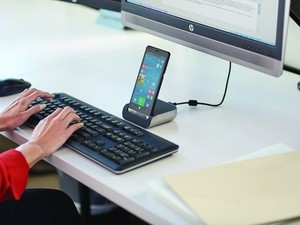 HP designed the system so that workers can run basic Microsoft Office productivity apps across a large desktop keyboard, mouse and display, as well as smaller displays, when the phone is wired via an optional dock accessory equipped with a USB-C port.
HP designed the system so that workers can run basic Microsoft Office productivity apps across a large desktop keyboard, mouse and display, as well as smaller displays, when the phone is wired via an optional dock accessory equipped with a USB-C port.
Security for the phone got a major boost, with both a fingerprint reader and an iris recognition camera, atop 256-bit key full disk encryption enabled by a fast Qualcomm Snapdragon 820 chip.
In addition to the phone and dock, HP announced a Mobile Extender device, basically a 12.5″ display and keyboard in a clamshell design that, when connected to the phone, displays the files, apps and other data kept on the phone. The Elite x3 takes advantage of Microsoft’s multi-screen Windows Continuum experience to allow Windows apps to be displayed and controlled with other connected devices, with the smartphone providing the computing power.
HP didn’t announce pricing for the Elite x3 or its optional accessories, but the phone is expected to fetch a premium price. However, the phone is also likely to be bundled with HP services and not priced separately.
The phone’s high-end features include a large 5.96″ display with 2560×1440 pixel resolution and Gorilla Glass 4 durability. The phone runs the latest Qualcomm Snapdragon 820 processor, which has four processor cores running at 2.15GHz.
The phone will also have a microSD expansion slot to allow for up to 2Tb of storage, atop its 64Gb of internal storage. It has 4Gb of memory.
Along with a 16MP rear camera and an 8MP front camera, the phone includes two stereo speakers. There is a large 4150mAh non-removable battery as well.
HP boosted security management with both iris recognition in the front-facing camera and a fingerprint reader on the rear of the phone’s body.
LG G5
Maybe it’s Apple fault, because it was the first company to seal in a smartphone’s battery. Within a couple of years, everyone else did, too (Samsung being the last major holdout). This may have delighted the companies that make portable battery chargers, but not everyone was thrilled. If fact, there’s been a steady drumbeat of customers who rail against non-replaceable batteries.
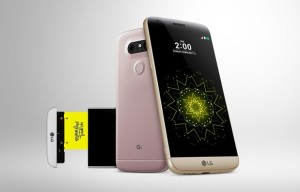 Those people will be thrilled with the LG G5. There are other good things about it, but the one thing that stands out is that the G5 has a replaceable battery. And it doesn’t use a door on the back of the phone or force you to pry the whole back off. Instead, there’s a clever little button on the lower right side of the phone; press it, and the bottom of the phone pops off and the battery pulls out.
Those people will be thrilled with the LG G5. There are other good things about it, but the one thing that stands out is that the G5 has a replaceable battery. And it doesn’t use a door on the back of the phone or force you to pry the whole back off. Instead, there’s a clever little button on the lower right side of the phone; press it, and the bottom of the phone pops off and the battery pulls out.
But wait, there’s more – because that phone bottom can be replaced by modules with additional functions. There’s a Hi-Fi module with sound (presumably DACs) from Bang & Olufsen, and another with a bigger grip and shutter trigger for the phone’s camera, so it acts like a point-and-shoot camera. More, LG promises, will be forthcoming.
The downside? The G5 is in no way waterproof. Other manufacturers of phones (and many other consumer electronic devices) now make a big deal out of their IP rating, which indicates how impervious their gadget is to dust and water.
It’s a comparatively small 5.3″ diagonal, and its quad-density IPS display looked perfectly fine under controlled conditions. It runs Android 6.0 (Marshmallow), but with some changes that are sure to be controversial.
There is no app launcher, for instance: All apps appear on a home screen that gains pages as you accumulate them, just like (for sake of argument) in Apple’s iPhone. In a choice that won’t anger as many people, the Settings screen is tabbed, making it easier to find the function you want, rather than scrolling through an endless list.
The build is solid aluminum, with a thin bead of metal running around the back – presumably, the antenna. Power is controlled by the fingerprint reader on the back.
LG has done some work with the camera, too. Rather than one lens on the back, there are two: a 16MP camera with a 75-degree range and a wide-angle 8MP camera. The claim is that the G5 can take wider pictures than any other phone.
Another feature LG makes a big deal of is an “always-on” screen. It’s not as eerie as it may sound: Turn the phone off or remove the battery and the screen does, in fact, turn off. But when the phone is sleeping, it’s always displaying the time and a notification you can set. LG says it pulls just 0.8% of the phone’s power per hour.
Sony Xperia X Performance
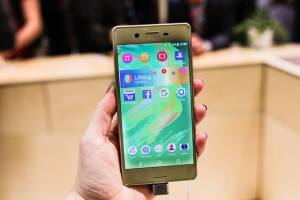 The Xperia X Performance is considered the top tier of the three smartphones in Sony’s latest lineup. It features a 5-inch, 1080p screen with Sony’s proprietary Triluminos technology, as well as a 23MP rear-facing camera, a 13MP front-facing camera, and a 2700mAh battery pack, which at this point is a bit smaller than most of the other flagship phones making the rounds. The X Performance also runs on a Snapdragon 820 and, like the Xperia phones of the past, it’s water-resistant.
The Xperia X Performance is considered the top tier of the three smartphones in Sony’s latest lineup. It features a 5-inch, 1080p screen with Sony’s proprietary Triluminos technology, as well as a 23MP rear-facing camera, a 13MP front-facing camera, and a 2700mAh battery pack, which at this point is a bit smaller than most of the other flagship phones making the rounds. The X Performance also runs on a Snapdragon 820 and, like the Xperia phones of the past, it’s water-resistant.
Now, here’s the predictive part of the X Performance: Its camera sensor comes with a feature called predictive hybrid auto focus, which Sony Mobile worked on in conjunction with its Alpha camera team. The phone attempts to predict what your subject will do next so it can take better action shots, resulting in less blur. There’s also a new quick-launch mechanism, which lets you launch the camera application with a long press of the phone’s physical shutter button. It’s super responsive, and just fast as Samsung’s double-press of the Home button on its Galaxy lineup.
Panasonic Toughpad
Panasonic retreated from smartphones a long time ago but that doesn’t mean they got out of mobile entirely. The Toughpad FZ-F1 and FZ-N1 are both designed to give users a handheld computer that can take a beating, when their job requires it. Panasonic calls the them handheld tablets, but the cellular connection and the dimensions of the devices puts them into what most people would consider the smartphone category.
 The F1 runs Android 5.1 Lollipop, but the N1 runs Windows 10 IoT Mobile Enterprise, a version of Microsoft’s operating system that’s designed to bring the capabilities of Windows 10 Mobile Enterprise to more specialised line-of-business devices.
The F1 runs Android 5.1 Lollipop, but the N1 runs Windows 10 IoT Mobile Enterprise, a version of Microsoft’s operating system that’s designed to bring the capabilities of Windows 10 Mobile Enterprise to more specialised line-of-business devices.
Both phones sport a 4.7″, 720p display, which is the same physical size as the iPhone 6 and other popular smartphones (though significantly lower resolution). The phones each sport 2Gb of RAM and 16Gb of built-in storage, along with a 2.3GHz quad-core Qualcomm Snapdragon processor. Those specifications won’t win any awards, but these devices aren’t designed for consumers.
Like Panasonic’s other ruggedised devices, these phones are designed to stand up to a lot of hazards that users could throw at them. They’re rated to be drop-proof for falls from up to six feet. The phones also meet the requirements for IP65 and IP67, meaning that they’re sealed against dust and fully submersible.
The phones also sport a built-in barcode reader, which means that companies don’t have to shell out extra for a case that provides that feature.
Realistically, these are going to be the sort of phones that companies only invest in purchasing for employees who will benefit from their ruggedness. The F1 will launch first as a handheld tablet without cellular capabilities in March for $1,499. A cellular model will follow during the autumn.
The Windows 10-equipped N1 will be available this autumn in both Wi-Fi and cellular variants, for an estimated $1,599.
Xiaomi Mi 5
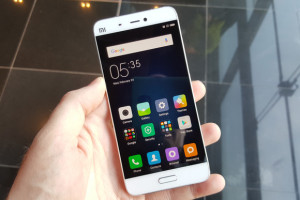 The first new flagship smartphone in over a year from China’s Xiaomi packs technology to match the iPhone 6 and Samsung Galaxy S7, but at around half the price.
The first new flagship smartphone in over a year from China’s Xiaomi packs technology to match the iPhone 6 and Samsung Galaxy S7, but at around half the price.
The Mi 5 is based around the Snapdragon 820 processor, the latest mobile chip from Qualcomm, has a 5.1″ screen, up to 128Gb of storage and a 16MP rear-facing camera.
The new smartphone takes most of its design cues from the Mi Note and looks a bit like many of the competing Android handsets on the market.
Xiaomi has added an oblong, silver-accented fingerprint sensor under the main display, which makes it look a lot like many other Android phones on the market. And the back of the phone curves at the edges, which is reminiscent of Samsung Note 5.
The Mi 5 will be available in white, gold and black – three of the four colours of the iPhone 6S.
Where it departs from other high-end Android handsets is in its price. The low-end version of the Mi 5 with the Snapdragon 820, 3Gb of RAM and 32Gb of storage will cost 1,999 renminbi, or about $305. That’s about half the price of the flagship Samsung and Apple handsets.
IDG News Service



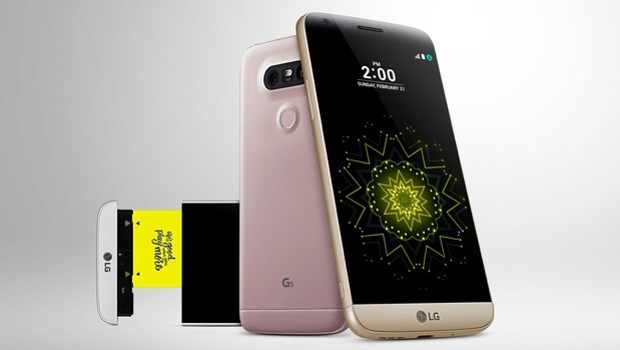


Subscribers 0
Fans 0
Followers 0
Followers